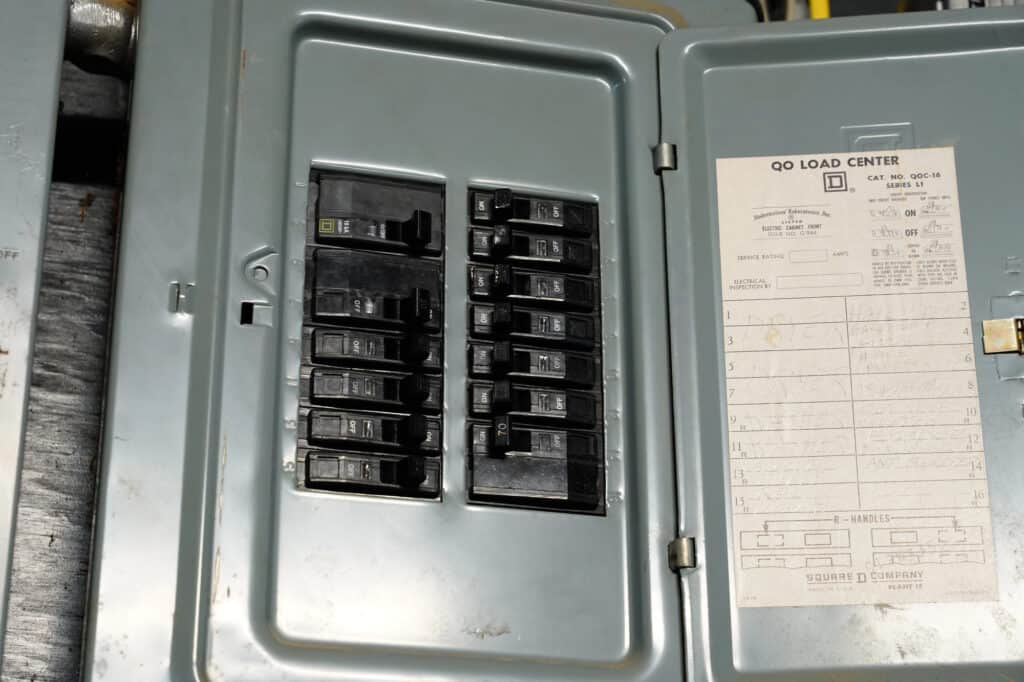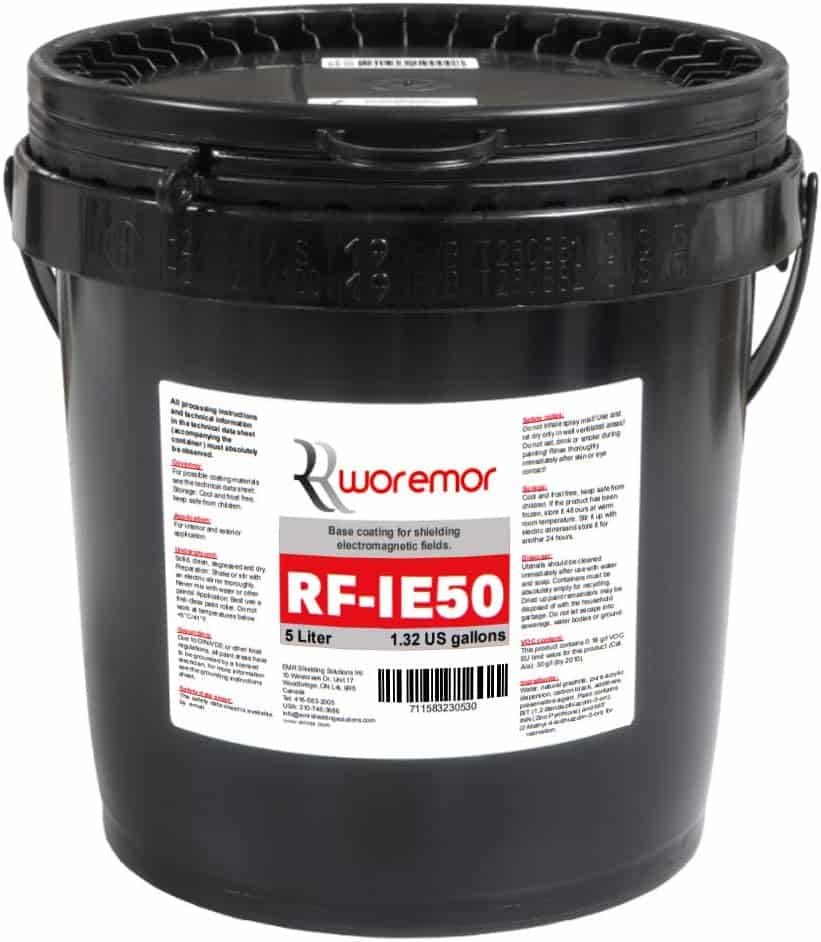Sleeping Near An Electrical Panel – Is It Dangerous?
*The information on EMF Academy is for educational purposes only and is not a substitute for professional medical advice. Please review our full Medical Disclaimer for more details. This post may contain affiliate links. Please see my disclosure to learn more.
If you had read my huge post on EMF radiation in the bedroom, you would have read that one solution to dramatically reduce EMF radiation while you sleep is to cut the power to your bedroom via the distribution board (or electrical panel) in your home.
However, what happens if your bedroom is right next to the room that contains your electrical panel?
Electrical breakers give off an enormous amount of EMF radiation. Just pick up a good EMF meter and find out for yourself. Given that they produce so much EMF radiation, sleeping near an electrical panel can be quite dangerous.
Let's dive into what the potential dangers are and what you can do to protect yourself.
If you're curious about the products that I use, trust, and recommend for EMF protection, take a look at my recommended products page.
Is It Dangerous To Sleep Near An Electrical Panel?

Hopefully, if you've read many other posts on EMF Academy or anywhere else, you at least have a basic understanding that long-term exposure to EMF radiation is extremely harmful to the body.
EMF Radiation has consistently been shown to create all sorts of symptoms, including:
- Fatigue
- Headaches
- Mood Swings
- Heart Arrhythmia
- Ashma
- Fertility Issues
- Digestive Issues
- Memory Problems
- Sleep Issues
Check out my full post on EMF exposure symptoms for a lot more information on this.
When we're talking about sleeping near a huge source of EMF Radiation like an electrical panel though, we also need to think about how this radiation affects our ability to get good sleep.
A study conducted by the Department of Electrical and Electronic Engineering at the University of Melbourne found that consistent exposure to EMF radiation dramatically hinders the body's ability to produce melatonin, which is the hormone the body relies on to regulate states of sleep.
The reason this happens is that the pineal gland, where the body produces melatonin, thinks that the EMF radiation is light, and so it produces less melatonin.
There are quite a few things you can do to make your bedroom a safer, more restful place, so check out my post on EMF radiation in the bedroom for tons of tips on this.
For all these reasons and more, it is vitally important to create, to the best of your ability, a space that is low EMF and conducive to restful, complete sleep.
I have worked hard to make my bedroom a sanctuary from the technologies around me, and I continue to do so.
Although I can’t be perfect, because the work I do does require technology, I've done my very best to make our home and bedroom safe for myself and my family.
So I put together the best tips I’ve found, and that we’ve used, to reduce or eliminate EMFs in the bedroom.
What To Do If You Sleep Near An Electrical Panel
Before I list out the best things to do, you really need to consider getting an EMF meter.
I promise that this will be your best and favorite tool when it comes to reducing EMF radiation exposure.
With a quality EMF meter, you can determine what kind and how much radiation is being emitted from the devices in your home.
In addition, you can actually determine if measures like the ones listed below are making a difference.
I personally have and love the new TriField TF2 (read my review) as it’s simple to use, lasts forever, is extremely accurate, and measures all three types of EMF radiation. However, you can also read my full article on the best EMF meters here.
Ok, now onto what you can do.
Increase the Distance Between Your Bed and the Panel
If your bedroom (or anywhere you spend a lot of time) shares a wall with your home's electrical panel, and relocating isn't an option, the first thing you should do is move your bed as far away from the panel as you realistically can.
When it comes to EMF radiation protection, distance is going to be your best friend.
The reason for this is that radiation intensity drops off rapidly as it gets farther away from the source.
This isn't just an assumption, it's physics.
According to the inverse-square law, when you double the distance between yourself and an EMF source (like your circuit breaker panel in this case), you quarter your exposure to that radiation.
So, even if you can't move the panel or change rooms, moving your bed a few feet farther away from the panel will make a real difference in your exposure.
Tip: Use your EMF meter to test the radiation levels at different parts of your room. Try measuring the foot of your bed vs. the headboard area to find the safest spot.
Even small changes in positioning can reduce your exposure during sleep, which is when your body is most vulnerable and doing its deepest healing.
Put A Barrier Between You and the Electrical Panel

If your bed happens to be near an electrical panel, and you aren't able to create distance, your next best option would be to shield the wall between you and the panel.
There are a few product options for this, but the simplest and best would probably be using EMF shielding paint.
I wrote a full review of my favorite EMF paint, and I highly recommend checking that out for step-by-step tips and what to expect.
EMF protection paints, like the one I talk about in that article, are specially formulated with conductive materials that can block or reflect RF (radio frequency) and EMF radiation.
These paints are very effective, but there are a few things that you should know before you get started:
Before You Paint
- Make sure that you measure the wall before you order any of the paint, and be sure to account for at least 2 coats. You can check out the Amazon listing for information on how much space a bucket or bottle covers.
- You'll need to ground the paint for it to be fully effective. You can ground it either to an electrical outlet, or to the earth, but I would consult the manufacturer's instructions on how to do this correctly. They do also sell accessories to help with this.
- Get an EMF meter so that you can measure how much radiation your electrical panel is giving off, and you'll be able to tell how much is being reduced. Usually, you'll get a reading, then paint a layer, get another reading, paint another layer, get another reading, ground the paint, get another reading, and so on until you can get it reduced to acceptable levels.
- EMF Protection paints like Yshield will block radio frequencies, so depending on where your WiFI router is, you could have some connection issues.
How To Know It's Working
Use an EMF meter to measure radiation before and after painting. I recommend the TriField TF2 for this.
Here’s a typical testing sequence:
- Take a baseline reading near the electrical panel.
- Apply one coat of paint.
- Test again.
- Apply a second coat.
- Ground the paint.
- Take a final reading and compare.
This process helps ensure the paint is actually reducing the radiation, because what’s the point of shielding if it’s not effective?
Cheaper Option To Shield An Electrical Panel

If the options above don't work for you, or if you're wanting an inexpensive option, then using a Mylar emergency blanket, like this one from Amazon, could be another possibility.
These blankets are made from metalized polyester and can reflect some EMF radiation.
To do this, just hang the blanket flat on the wall between your bed and where the panel is located.
A couple of things to keep in mind, though, if you're going to use this strategy:
- It's not grounded, so it is going to reflect the radiation rather than absorbing or redirecting it.
- These blankets do not offer the same level of protection (attenuation) as an EMF shielding paint or fabric would.
- This is better used as a temporary or mobile solution.
I've tested this out in my own home laundry room, and it did lower the readings on my EMF meter when I tested with and without the blanket.
However, the reduction will be even greater with a longer-term solution like the paint we talked about above.
What About Sleeping Near An Electrical Outlet?
An electrical outlet will not put off nearly the amount of EMF radiation that an electrical panel will, especially if nothing is plugged in and drawing power from it.
However, the wiring in your home that goes from the panel to these outlets can emit a small amount of radiation, primarily through dirty electricity.
All sorts of devices like dimmer switches, computers, and even certain lightbulbs draw inconsistent power and switch the current from AC to DC, which interrupts the smooth sine waves and produces harmonics (physics definition, not musical one) of dirty electricity.
This dirty electricity, since it cannot be used by other electronics, radiates a good amount of measurable EMF radiation, and can be harmful in the long run.
You can read my full post on the dangers of dirty electricity for more on this.
The video below shows you a reading of how much EMF radiation electrical outlets put off.
Final Thoughts
No matter what you decide to do, if you are sleeping near an electrical panel, it is really important to take steps to reduce the radiation.
Not only because you will spend one-third of your life in that space, and long-term EMF exposure is really harmful, but also because you'll get much better sleep.
Also, be sure to check out my recommended products page!
If you enjoyed my post, please consider sharing!







